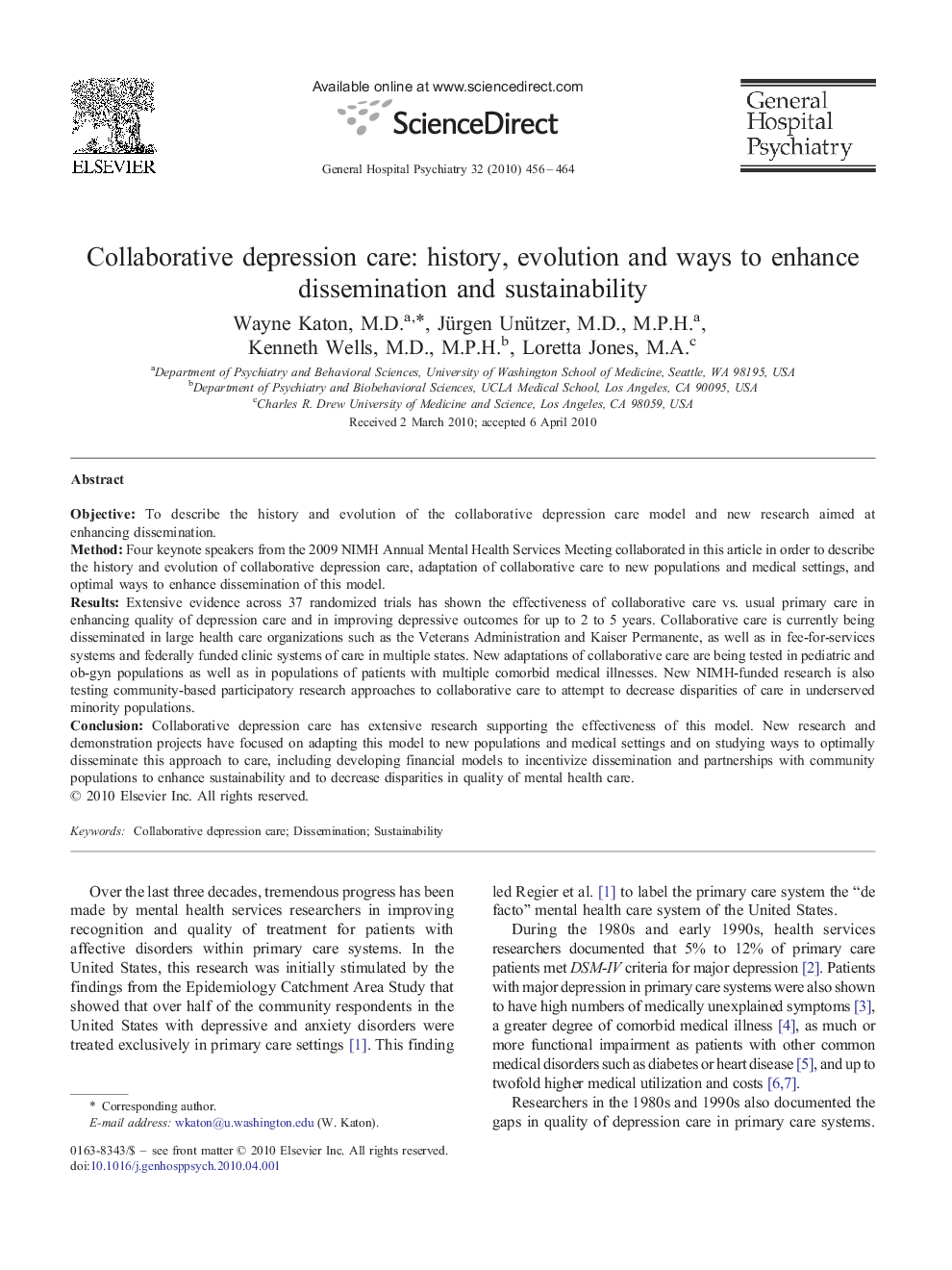| Article ID | Journal | Published Year | Pages | File Type |
|---|---|---|---|---|
| 3237947 | General Hospital Psychiatry | 2010 | 9 Pages |
ObjectiveTo describe the history and evolution of the collaborative depression care model and new research aimed at enhancing dissemination.MethodFour keynote speakers from the 2009 NIMH Annual Mental Health Services Meeting collaborated in this article in order to describe the history and evolution of collaborative depression care, adaptation of collaborative care to new populations and medical settings, and optimal ways to enhance dissemination of this model.ResultsExtensive evidence across 37 randomized trials has shown the effectiveness of collaborative care vs. usual primary care in enhancing quality of depression care and in improving depressive outcomes for up to 2 to 5 years. Collaborative care is currently being disseminated in large health care organizations such as the Veterans Administration and Kaiser Permanente, as well as in fee-for-services systems and federally funded clinic systems of care in multiple states. New adaptations of collaborative care are being tested in pediatric and ob-gyn populations as well as in populations of patients with multiple comorbid medical illnesses. New NIMH-funded research is also testing community-based participatory research approaches to collaborative care to attempt to decrease disparities of care in underserved minority populations.ConclusionCollaborative depression care has extensive research supporting the effectiveness of this model. New research and demonstration projects have focused on adapting this model to new populations and medical settings and on studying ways to optimally disseminate this approach to care, including developing financial models to incentivize dissemination and partnerships with community populations to enhance sustainability and to decrease disparities in quality of mental health care.
